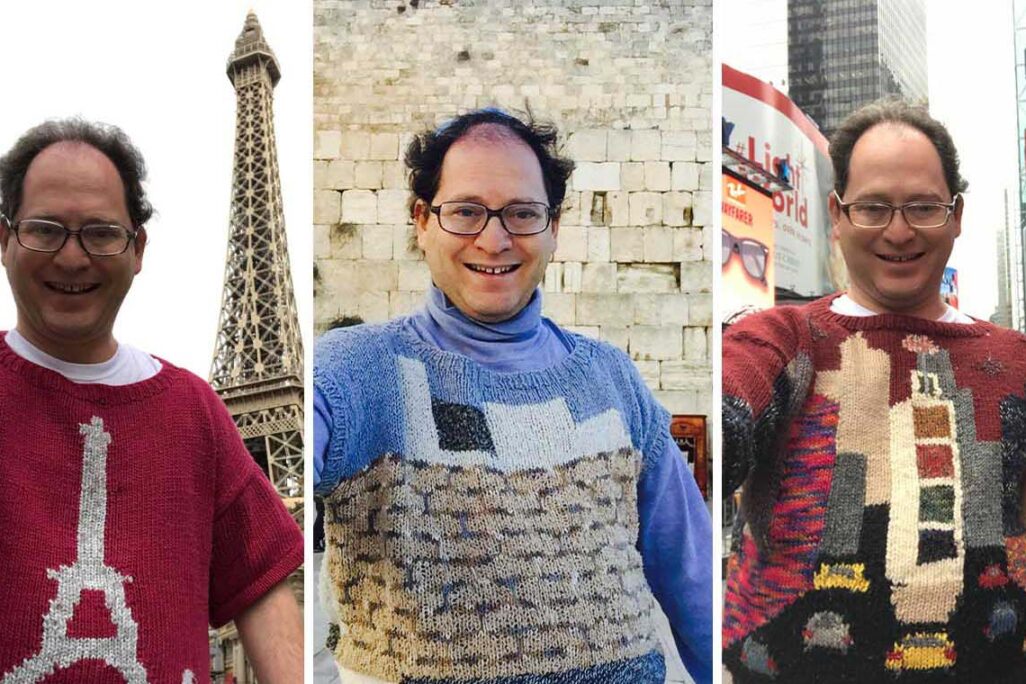
From the Western Wall to the Hong Kong skyline; from the ancient streets of Safed to the luxurious hotels of Las Vegas – each one of these views has made it onto one of Sam Bersky’s sweaters. Sam (Shmuel) Bersky, 46, has been knitting sweaters with patterns representing various sites in the world for more than 22 years. He posts photos of himself wearing the sweaters at the sites, gaining fans around the world.
After years of traveling the world, the coronavirus pandemic has redefined Bersky’s life. "I miss a one-on-one meeting with people,” he told Davar in a phone interview.
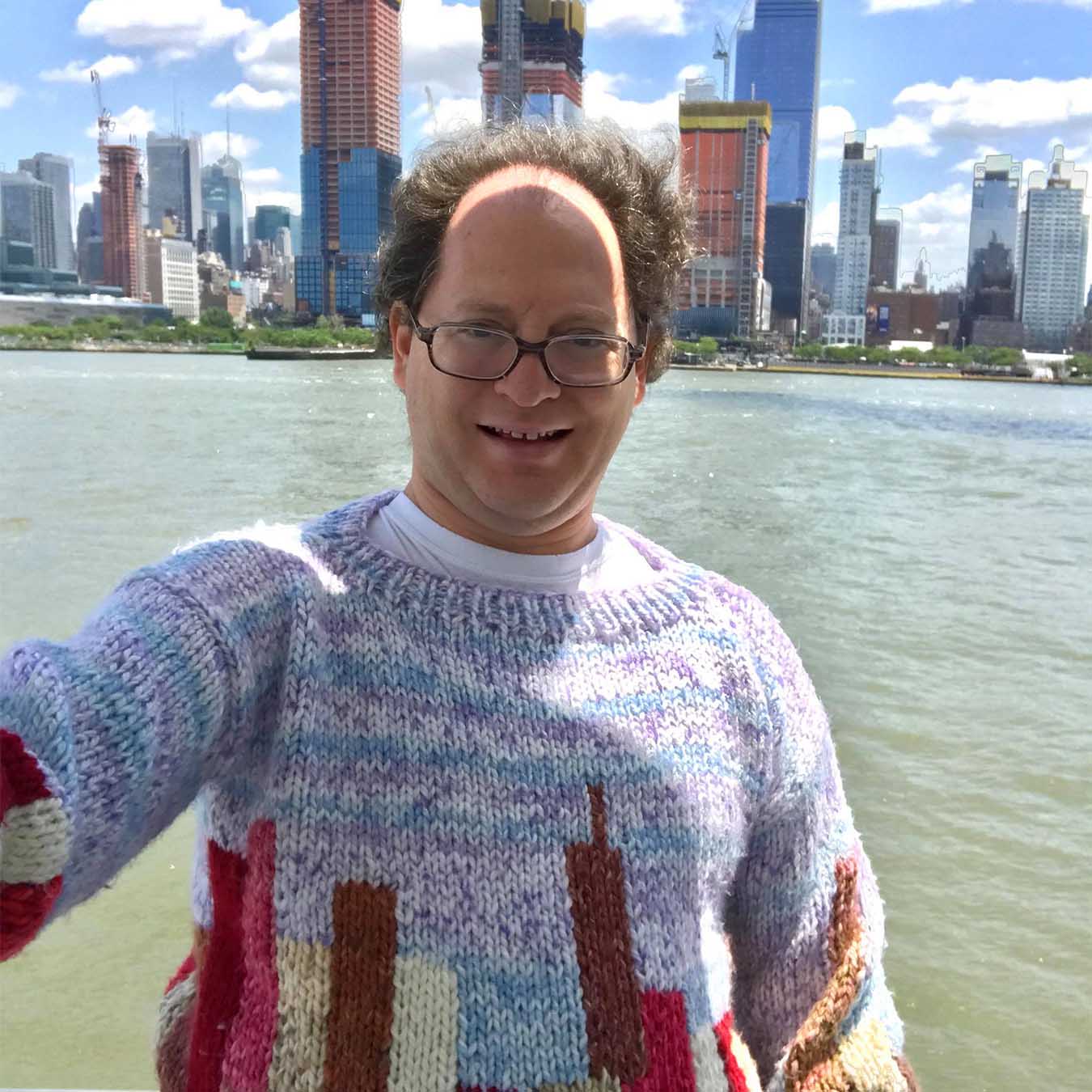
But the limitations also have a positive side – the chance to rediscover his own neighborhood in Baltimore, Maryland.
"I walk around the city and enjoy sights I had never fully appreciated before," he said. "My latest sweater is called the Jerusalem Mill, but it has nothing to do with the city of Jerusalem. It is a famous historic building in Baltimore. My wife and I visited and had our picture taken next to it. Then one of my fans from the area suggested I knit a sweater for it."
"I made friends all over the world"
Bersky started posting pictures of his hand-made sweaters about four years ago, and after posting no less than 150 sweaters, he has gained over 100,000 followers on TikTok and Instagram.
"I once sat down to breakfast at a hotel in Jerusalem," he said. "A woman approached me, hugged me, said she was a big fan and asked for a photo with a sweater. I made friends all over the world."
His knitting journey began 22 years ago, in Baltimore, where he was born and raised. Because of a learning disability, he attended special education schools. After leaving a community college where he was studying to be a nurse, he set out on a quest for his vocation.
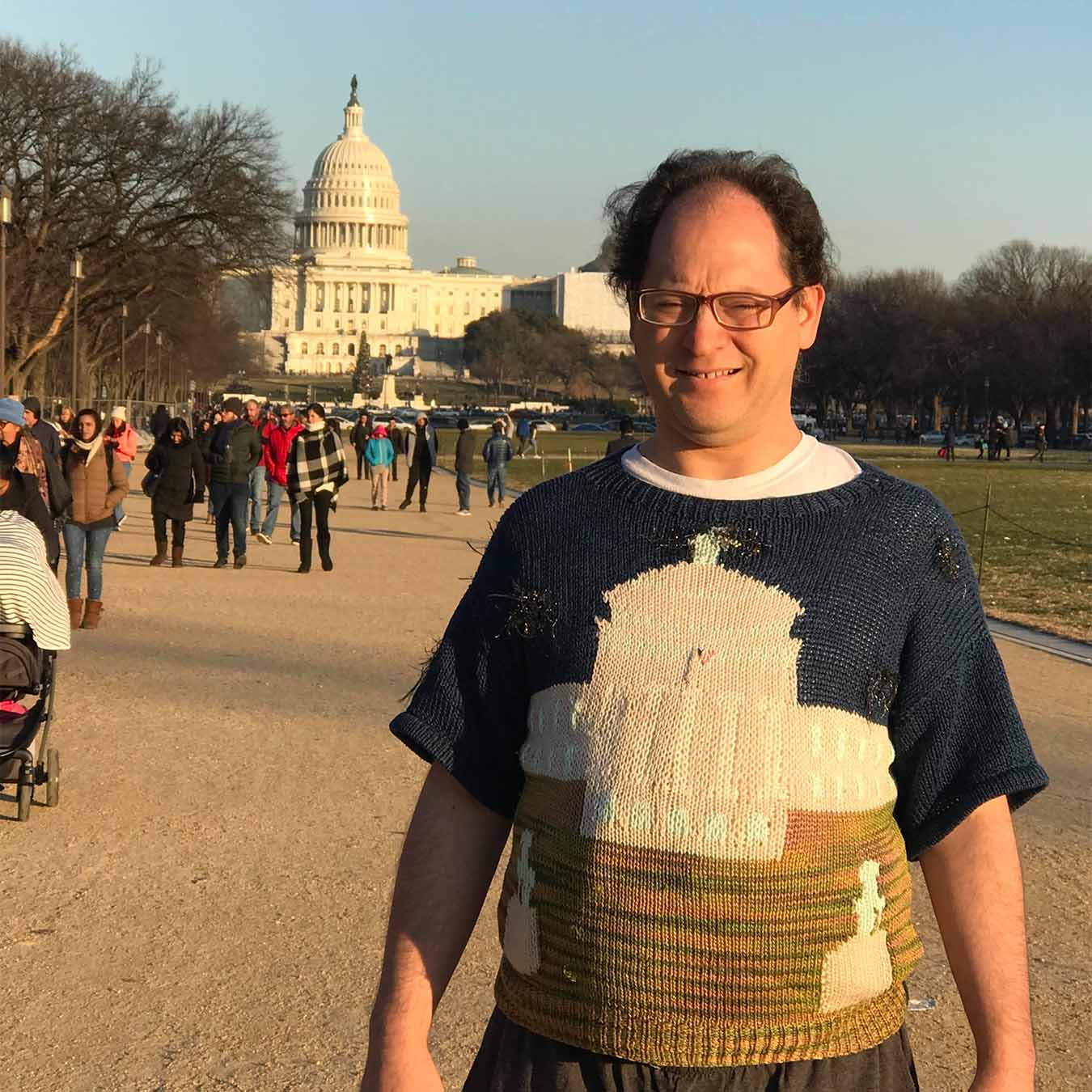
"I tried to look for a profession that I could make a living from, but I didn’t find something I liked. My dream was to knit. I tried to learn through books or through knitting groups, but there were never enough participants,” Bersky explained. “I had a habit of walking around the flea market in town every Sunday. One day I found a stall selling textiles. I shared with the seller my dream of learning to knit and he agreed to teach me on one condition: that I would buy all the raw materials from him. I agreed."
"All you have to do is imagine"
Bersky’s knitting has evolved over the years. At first, the sweaters were all solid colors. Later, he began to add colors and patterns to them.
"As I saw myself getting better, I started adding more complex shapes. At first I used pre-made patterns, but at one point I said to myself, why do I need this? I have so many pictures in my mind. All you have to do is imagine," he said.
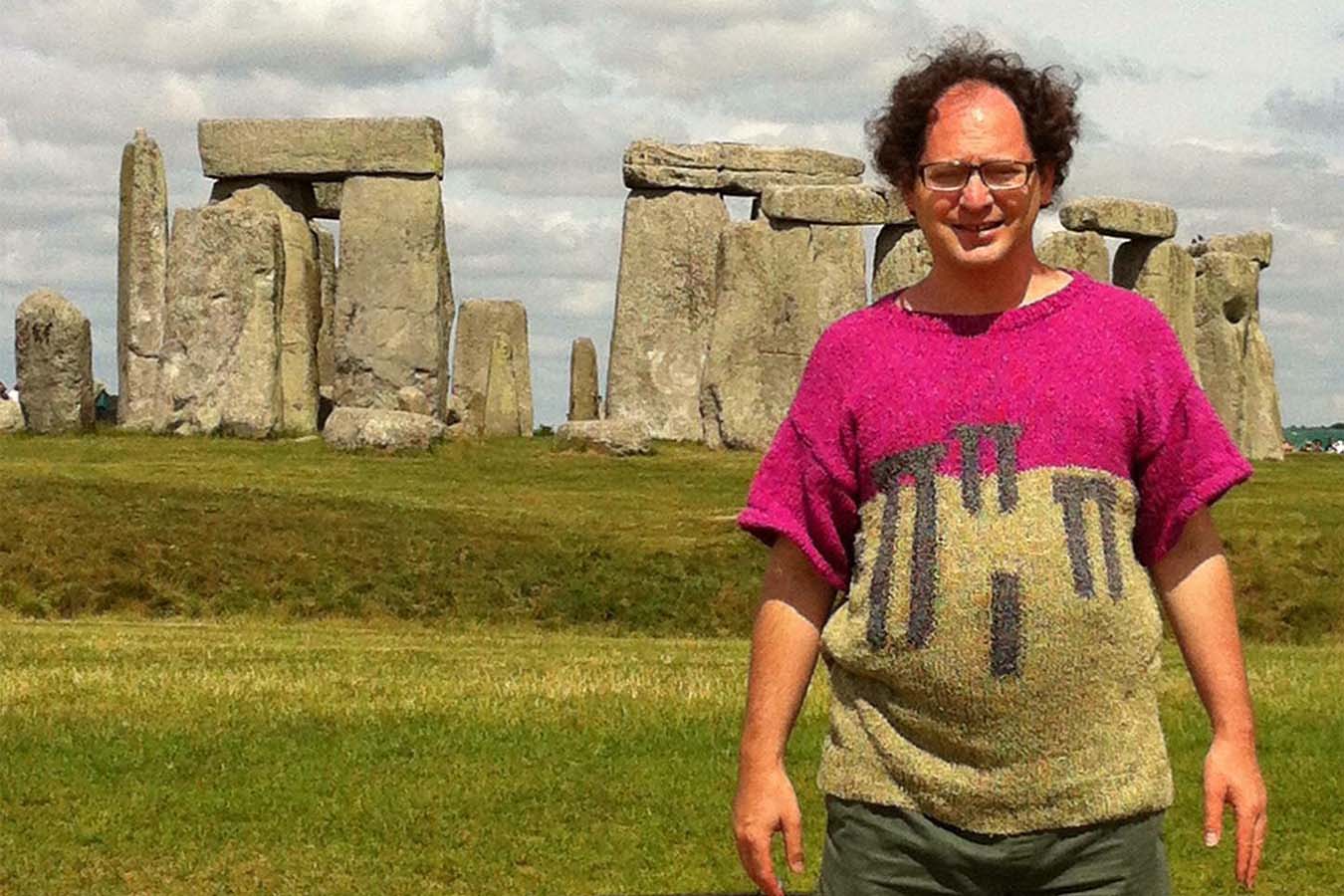
In his first landscape sweater, he knitted a picture of a bridge and a waterfall.
"It was just a picture that came to my mind, not a specific place. But later I continued with this line, with pictures of nature and animals,” Bersky said. “I realized that you could actually put anything on a sweater, and as I got better, I realized that was what I wanted to do with my life."
His family is proud of his work and supported him from the beginning, he says. "They and my friends are my biggest fans."
How do you decide what to knit?
"I imagine a picture in my head, look for the right yarns for it and start knitting from the bottom up. There are a lot of knitting shops in my area and they provide me with most of the things I need. Sometimes, when I can't find a yarn of a certain color, I order from other places,” he said. "Second-hand stores sell yarn that they have left over from a project that they did not finish. I was able to buy yarn even when I visited Israel."
How long does it take to knit a sweater?
"From the moment a sweater comes to mind to the moment I can wear it, it takes about a month. There are sweaters that I started knitting, I stopped, and I went back to after years. I recently finished a sweater that I started knitting over a decade ago," Bersky explained.
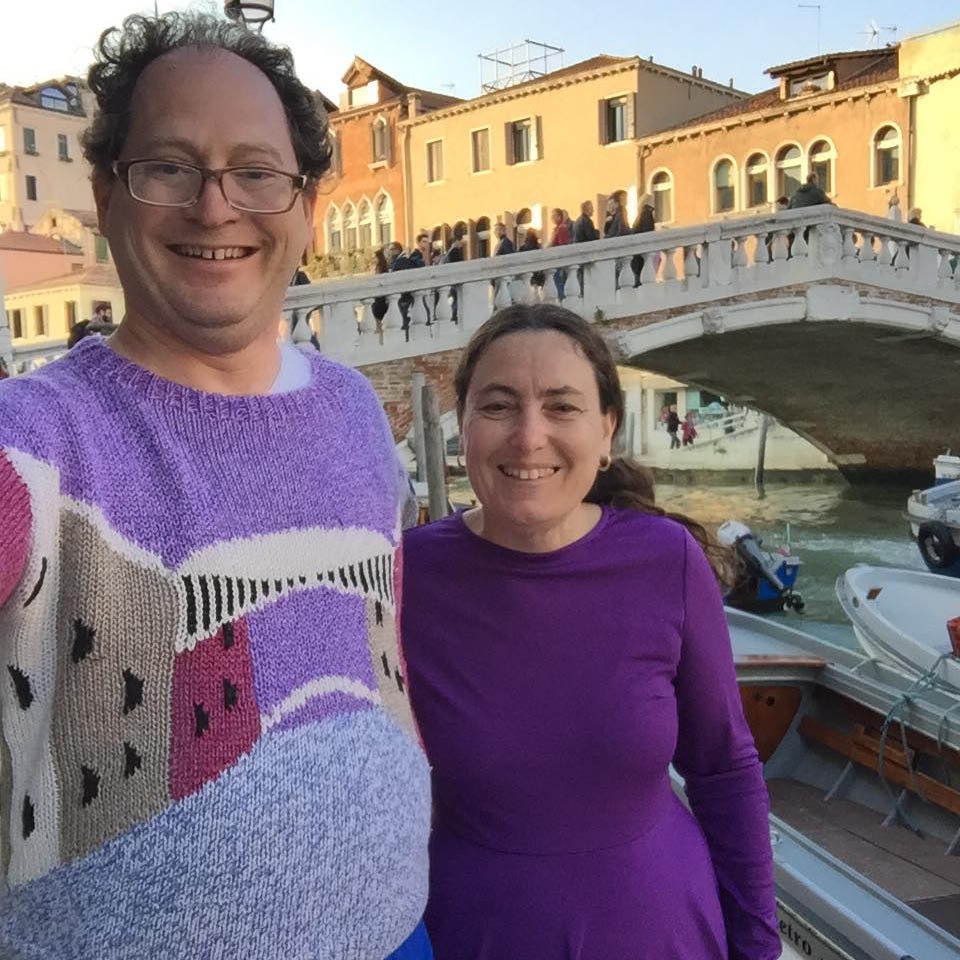
“The hardest sweaters to knit are the ones with designs of cities, the ones that have a lot of details in them. I knitted the sweaters of Times Square, Las Vegas and Hong Kong in about the same amount of time it takes me to knit other sweaters, but I had to think and work very hard for them to work."
Why? What was more difficult about them?
"In urban scenes there are a lot of cars. Every car has a few colors, that is, many yarns, and all that work is doubled by the number of cars on the street. The same goes for the skyscrapers, like in a Tel Aviv sweater, where needles and colors had to be changed for each building," he explained.
"Knitting on Zoom is just not the same”
Knitting is a daily action for Bersky, a natural part of his routine. He knits whenever it's possible.
"That's most of the time," he laughs.
Before the outbreak of the coronavirus, he used to participate in knitting groups. Working with others gave him energy, and made the repetitive process more enjoyable.
“Being around others brings me joy,” he said. "On normal days, I try to meet with people every two or three days and knit with them. There are people in my knitting group whom I have known for many years. I have knitted dozens of sweaters next to them.”
Since last April, he has limited his social gatherings and finds some solace in Zoom knitting sessions.
"But it's not the same. Twenty people on Zoom are not really able to converse,” he said.
A glowing menorah
One day 20 years ago, Bersky to Friday prayers at Chevrei Tzedek, a Baltimore synagogue where he is a member.
"As I prayed and looked around, I wondered why as a Jew, I wasn’t making sweaters with Jewish symbols,” he said.
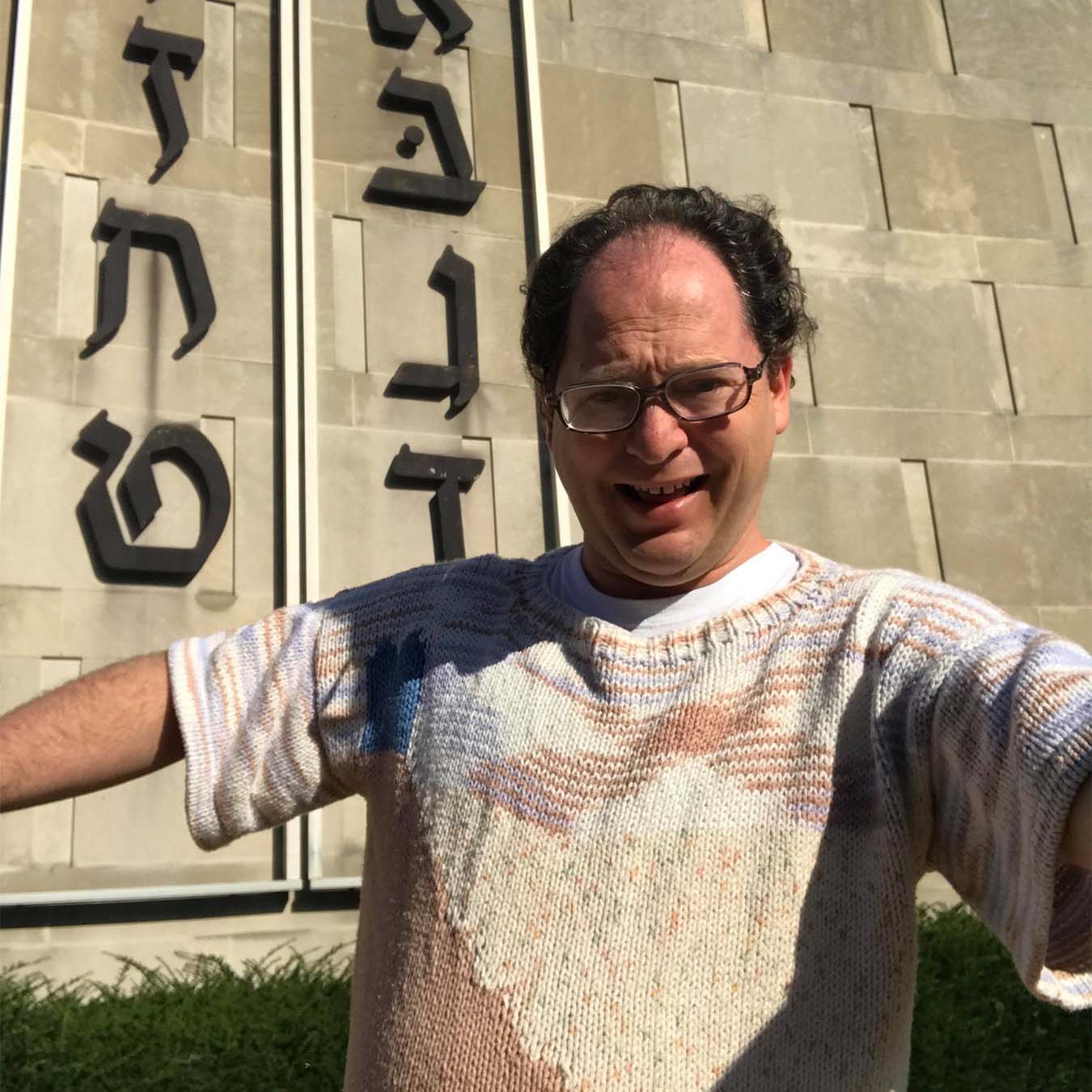
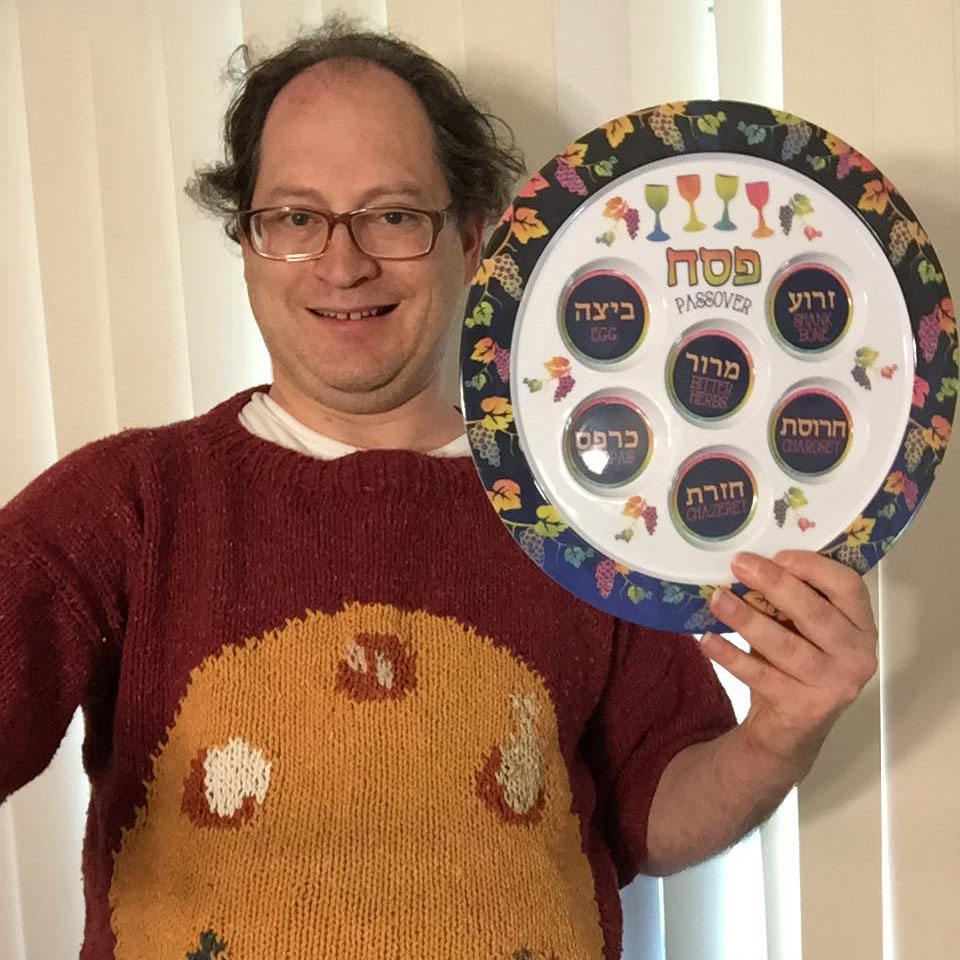
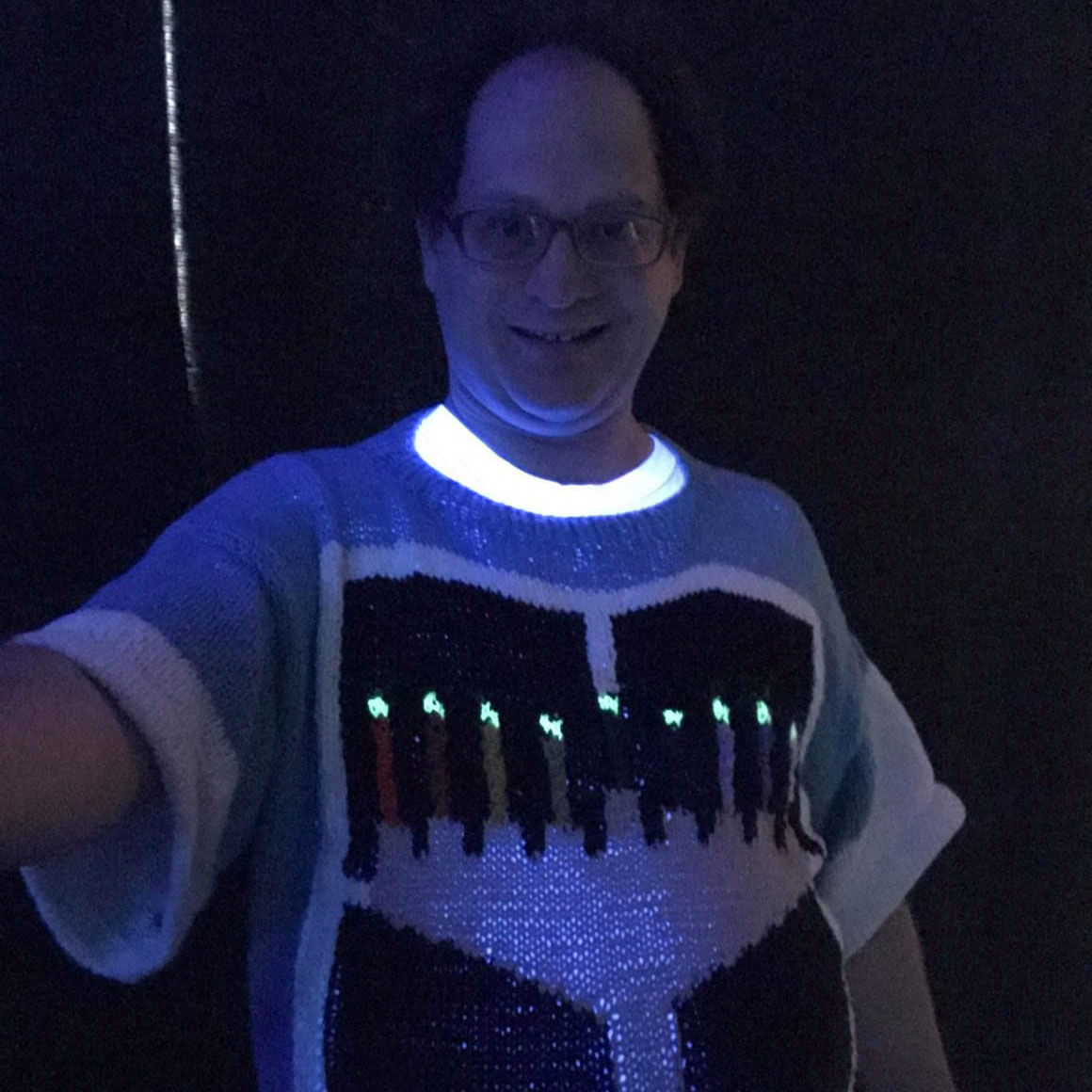
When Sukkot came, he decided to knit a sweater with a design of a sukkah and the Four Species.
"I thought it would be easiest for me to knit this pattern because it has solid colors," he said. He was pleased with the result, so he started working on the next holiday in the Hebrew calendar.
"I got glow-in-the-dark wool, I have no idea where, and I knitted flames of fire glowing in the dark. I knitted spinning tops on the sleeves." Since then, he said, he has knitted five more Passover sweaters, four more Hanukkah sweaters, and many more sweaters for other Jewish holidays.
"I usually wear these sweaters regularly during the holidays, take pictures with them and post them on the internet," he said. And because he is committed to his fans, he does not neglect holidays of other religions either. "I also knitted sweaters for Christmas, Thanksgiving and right now I'm knitting one for Valentine’s Day, which is coming up soon."
American tank in Latrun
Of course, he also has a collection inspired by trips to Israel.
"I have traveled in Israel more than anywhere else outside the United States," he said. His wife has family in Israel, and he already has Israeli fans, with whom he tries to meet whenever possible.
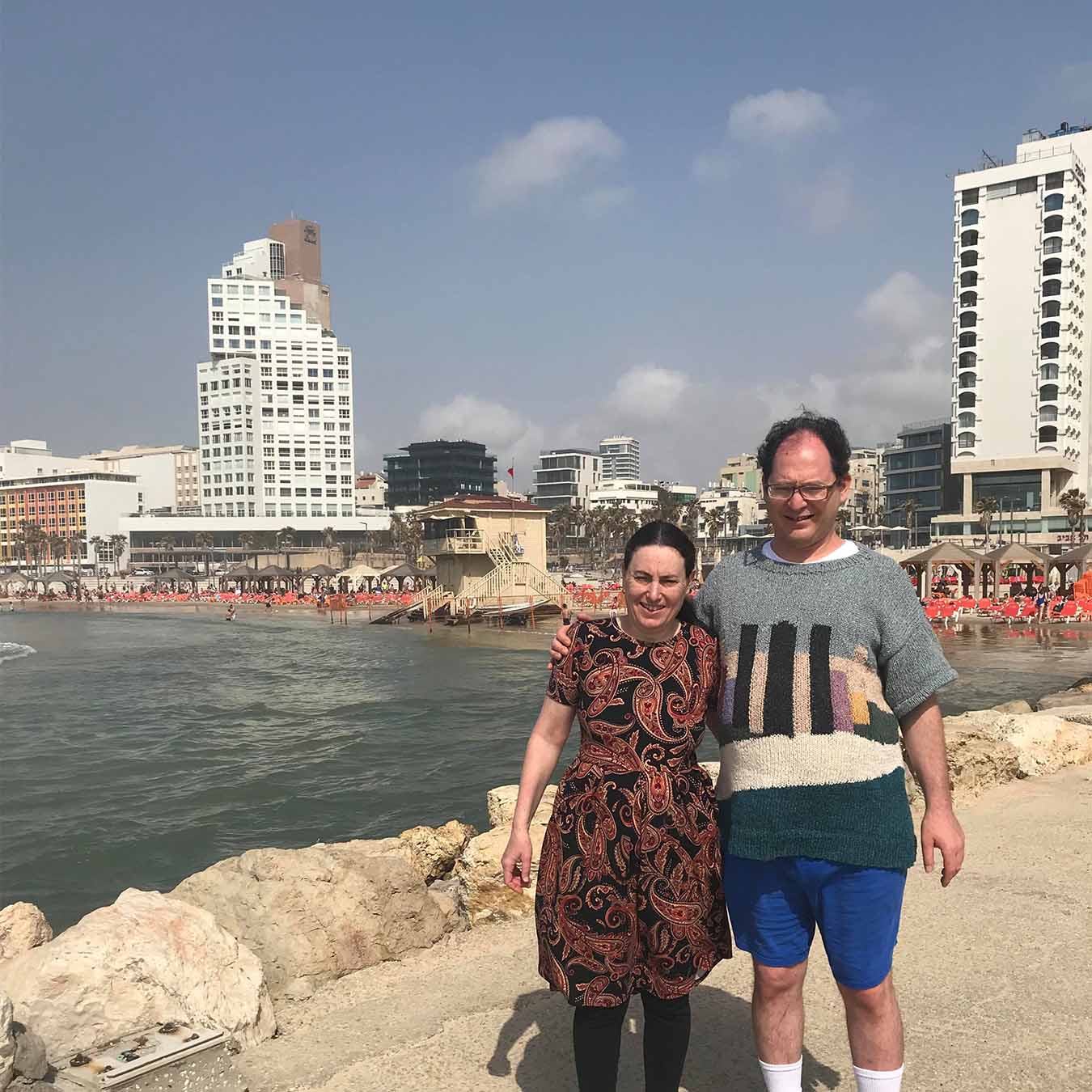
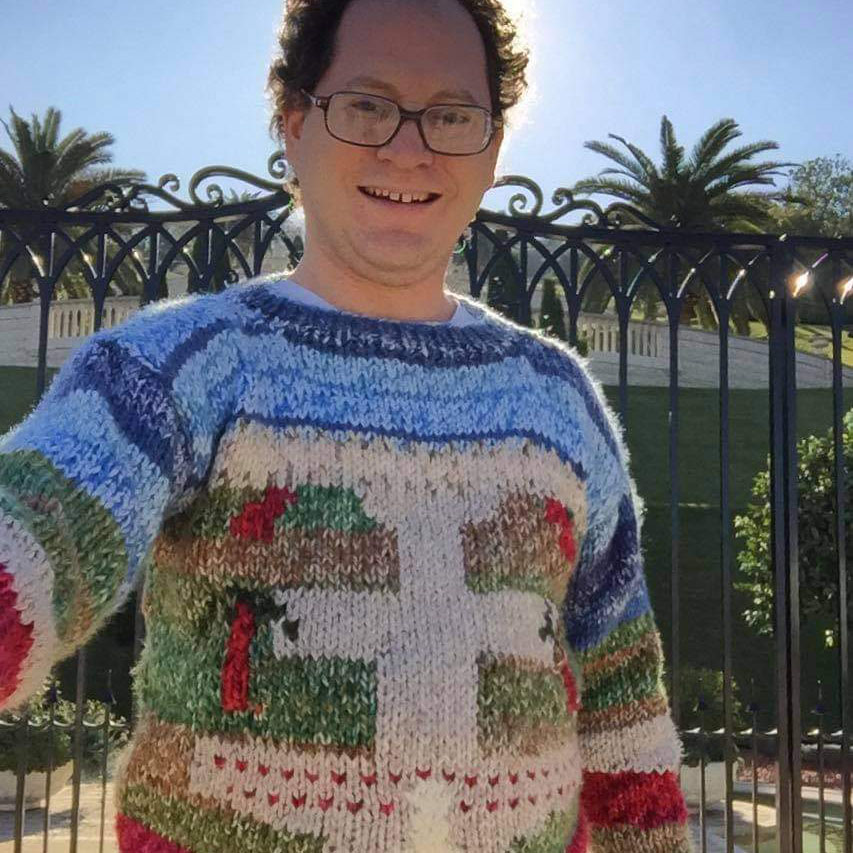
"I have a deep love for the country and every time I visit, I make at least two sweaters with different places," he said, explaining that the first sweater he created was of the Western Wall. "It's an obvious choice. But my favorite place in the country is without a doubt Ein Gedi and the Dead Sea. I knitted two sweaters for those places."
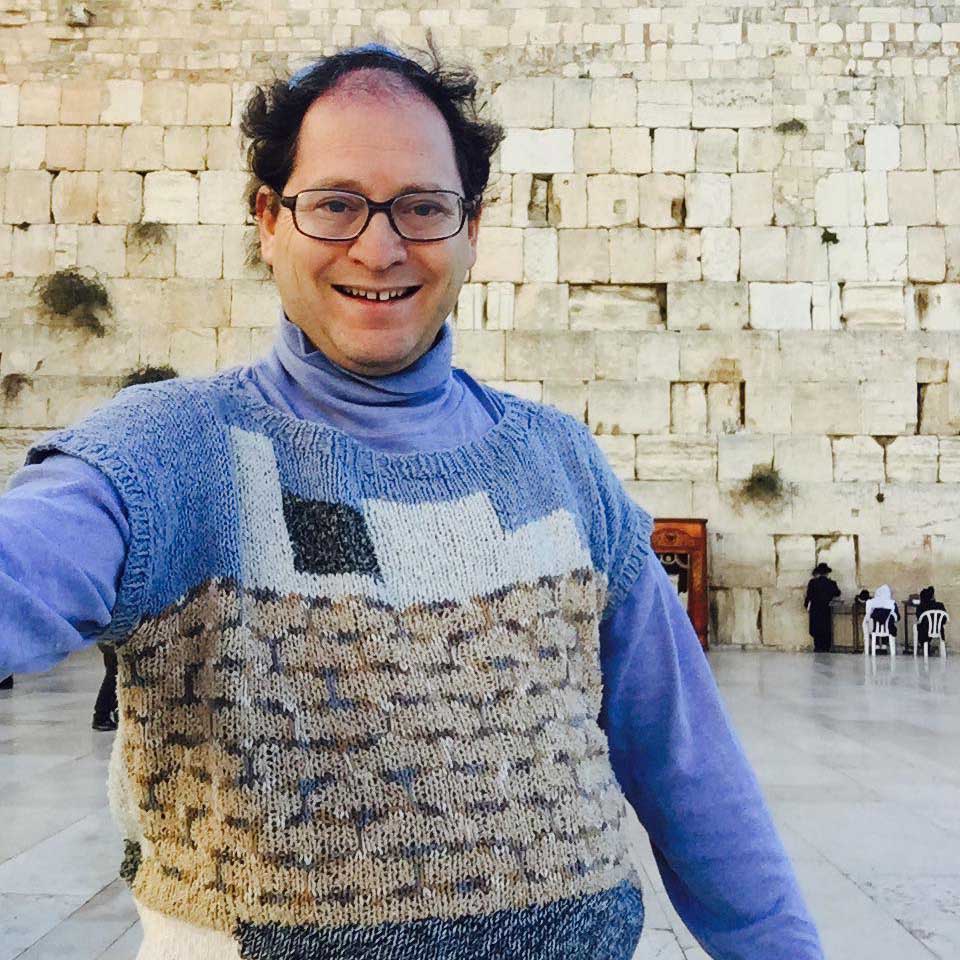
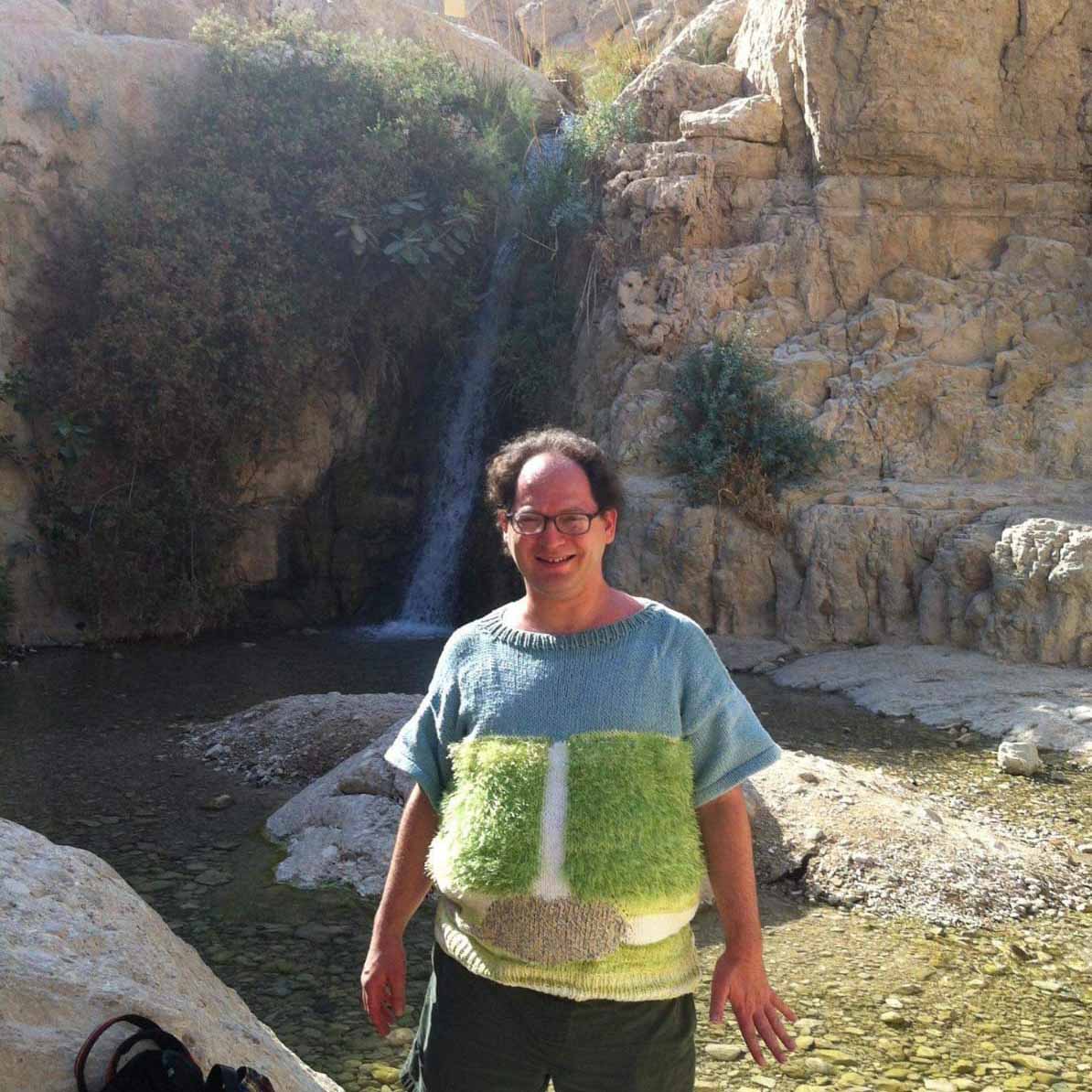
Bersky has a special story about the sweater he wore when he was photographed in Latrun. "I decided to knit a tank sweater, regardless of Israel,” he said. “I am not a man of war, but I thought it would be an interesting design for a sweater.”
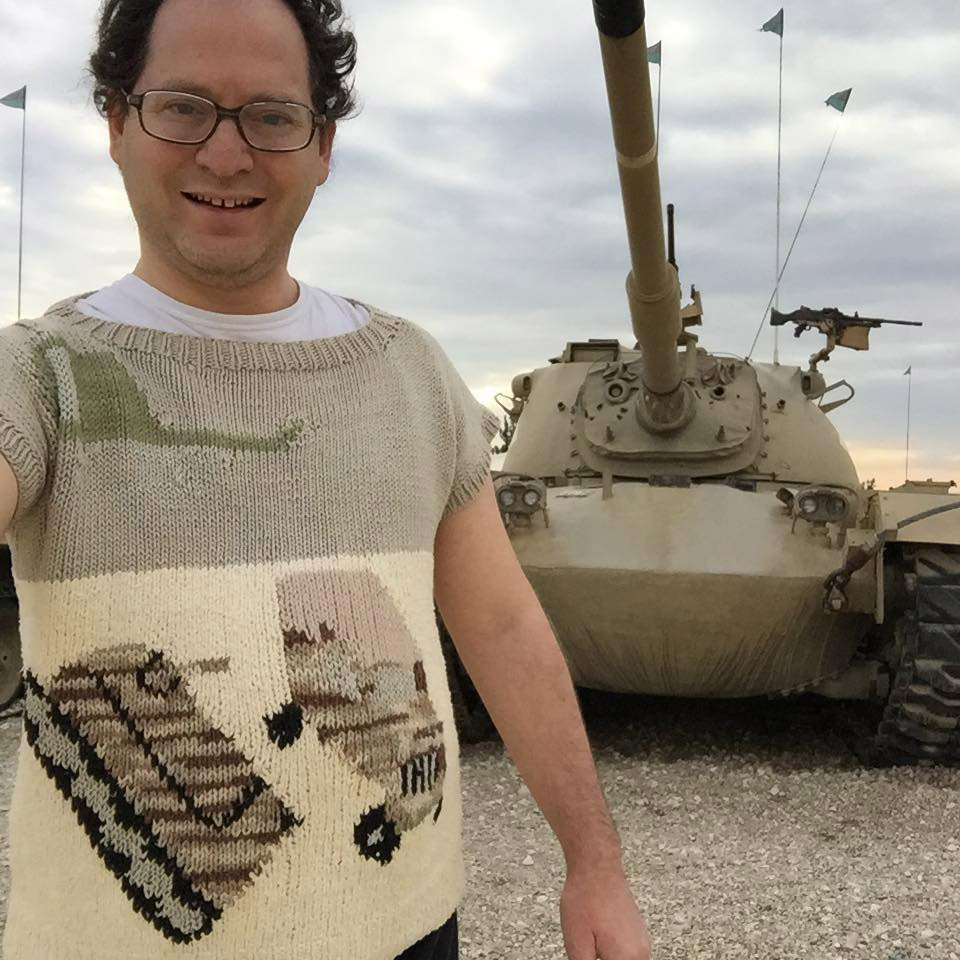
“There was a museum in the Baltimore area where you could have your picture taken near a tank, but when I got there a few years ago I discovered that the museum was permanently closed. A few months after that I flew to Israel and decided to go visit Latrun and have my picture taken with the sweater next to a tank. I was surprised by the immense enthusiasm the picture received; I post it twice a year, and it is popular with Israelis and non-Israelis."
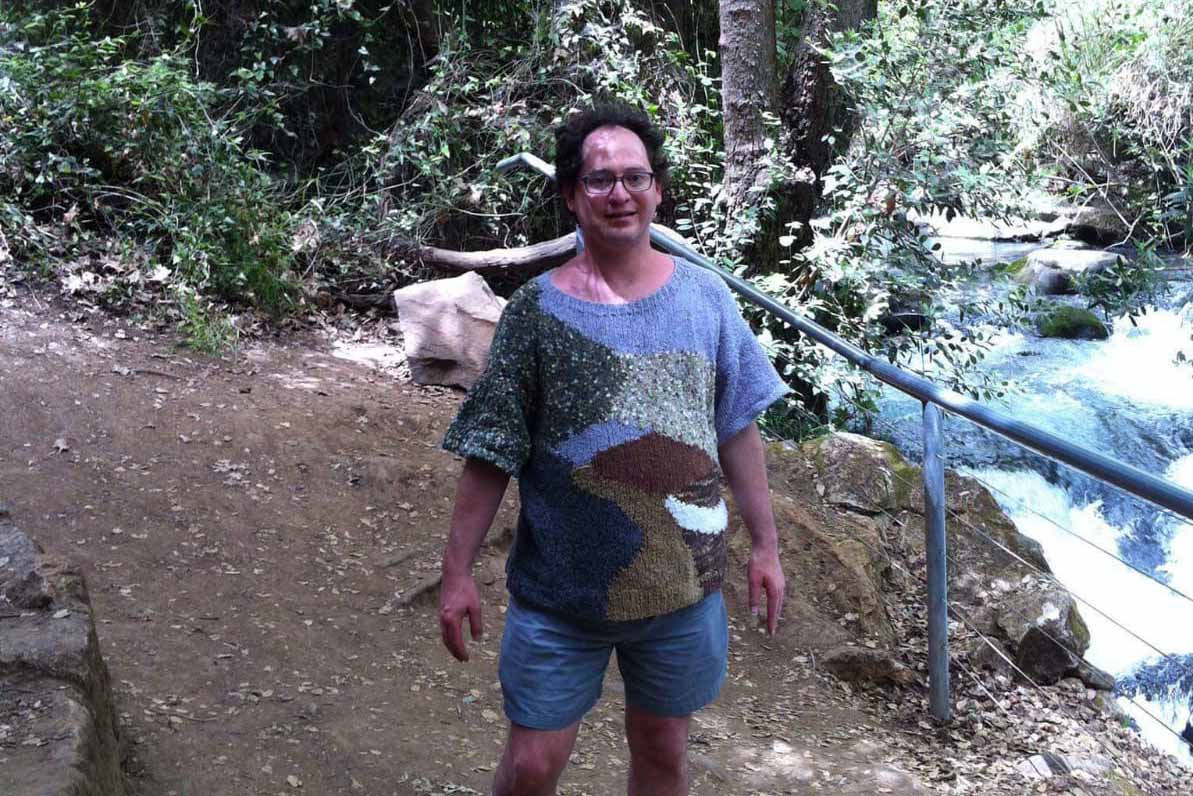
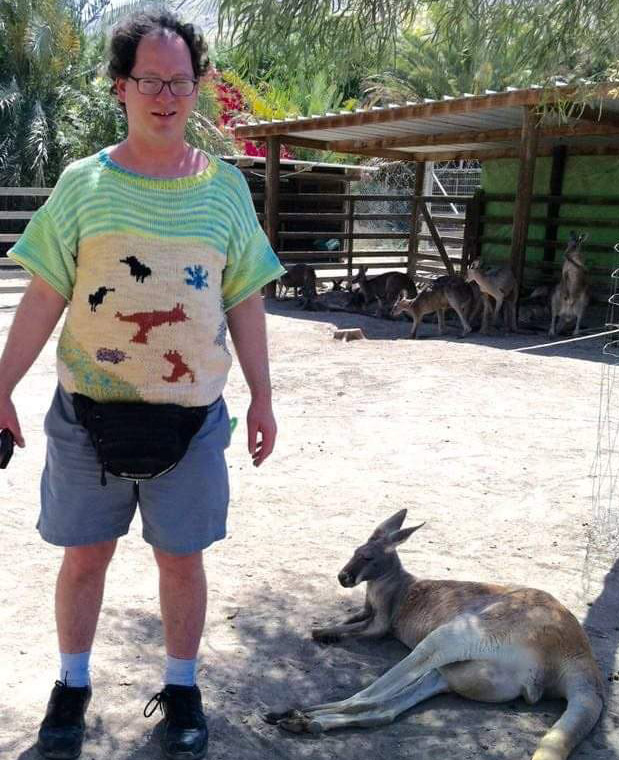
In the future, he dreams of knitting a sweater of the Jerusalem Forest. "In recent years, I have realized that this is one of my favorite places in the city. My wife and I travel there every time we come to the area."
"There is no price for my sweaters"
What do you do with all the sweaters you knit?
"I keep all my sweaters, from the first to the last. I very rarely found myself giving a sweater to anyone else,” he said. “There is just no price for my sweaters, they are all priceless to me, and it has nothing to do with the price of the materials. I have invested my best time, talent and efforts in them."
Bersky only sold his sweaters once.
"It was in the city of Boulder, Colorado. I was specifically invited there and asked to knit three sweaters of the landscape around the city, with the Rocky Mountains in the background,” Bersky said. “They displayed them in the library for several months, along with another 40 of my sweaters. People who visited there got to put on the sweater with the view in the background. At the end of the exhibition, the organizers asked to keep the sweaters. I didn’t jump at the offer, but they insisted.”
“They paid me a handsome sum for them, so in the end, I couldn’t refuse.”
If not a sweater, then a T-shirt
Bersky refuses to part with the sweaters he created, but pressure from his fans led him to market T-shirts with prints of his sweaters on them and sell them on social media. Lately, Bersky has begun to support himself through T-shirt sales.
"It's a big success. Orders come in all the time, even during coronavirus, and people ask for new sweaters and make suggestions,” he said.
The most sought-after t-shirt, not surprisingly, is a T-shirt with the pattern of its fans' favorite sweater: the glowing menorah.
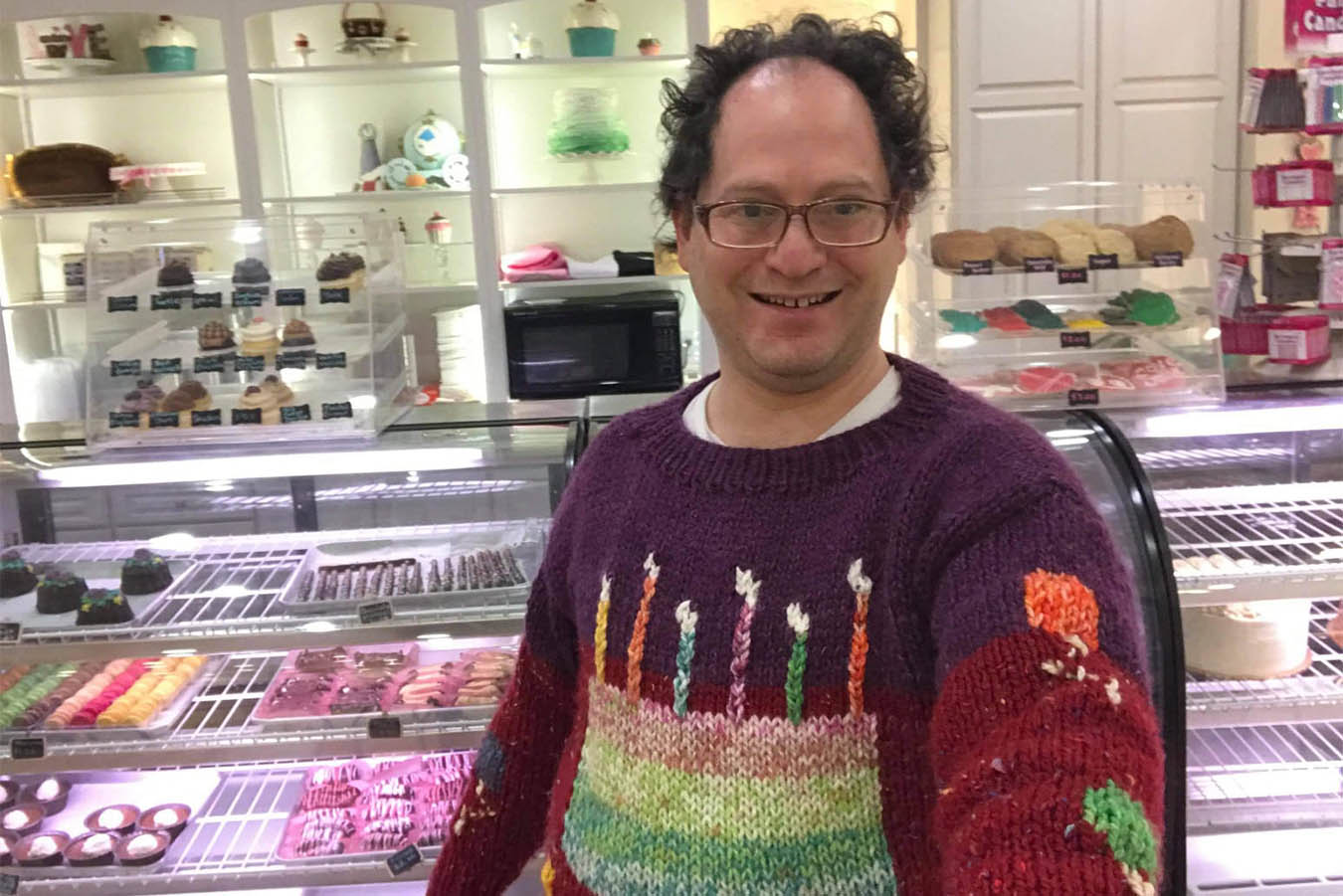
Another source of income for him are knitting classes and lectures he gives.
"I tell about my childhood and the way I got into knitting through short stories from my life: how I sewed a twin towers sweater a few months before the 9/11 attacks; about an hour-long car ride to get a yarn I was missing to finish a sweater."
Bersky recently announced a new venture: a personalized birthday greeting.
"I have a special birthday sweater that I wear and film myself saying happy birthday,” he said. “The idea for the initiative came from one of my fans. Anyone can order one. I tell people to pay as much as they want. Most people pay. Usually it’s just symbolic, but there are those who pay me a lot."
"My coronavirus year"
"My wife," he said, "worked in food marketing, but since the epidemic started, we haven’t felt safe going into supermarkets. In the meantime, she volunteers from home by phone; among other things, she tutors students in Israel via Skype."
But he said he will not knit about his experiences during the coronavirus pandemic. "I refuse to make a sweater that is tied to the coronavirus."
Why?
"I do not want to make coronavirus into a symbol. It is a tragedy that has killed over 400,000 people in my country, and the numbers continue to rise. After the coronavirus, I hope to plan a new lecture, which will tell about my year during the pandemic."
When the pandemic passes, he hopes to travel to more places around the world to knit more sweaters.
"At the top of my list today are Machu Picchu in Peru and the natural spaces of Australia. Besides that, my wife and I hope to have a child," he said.






